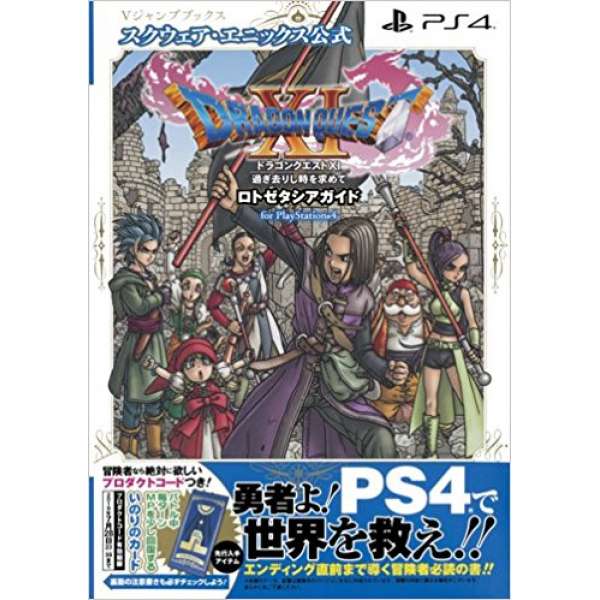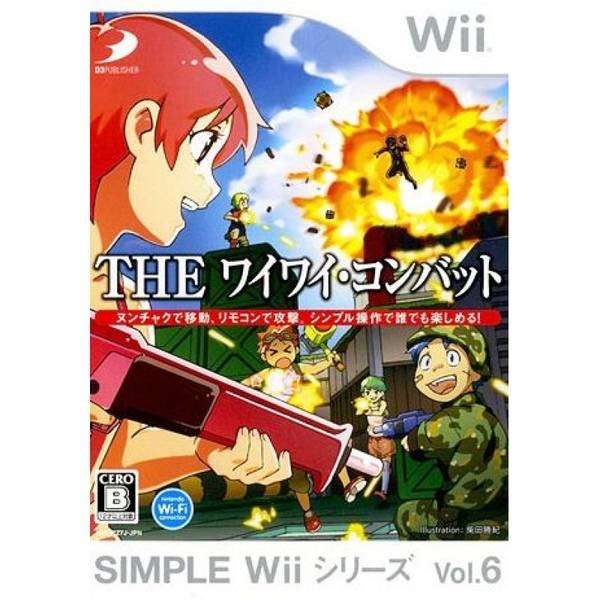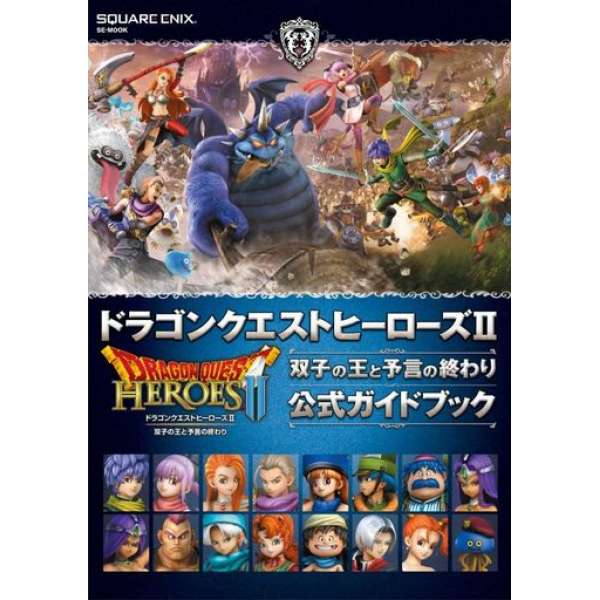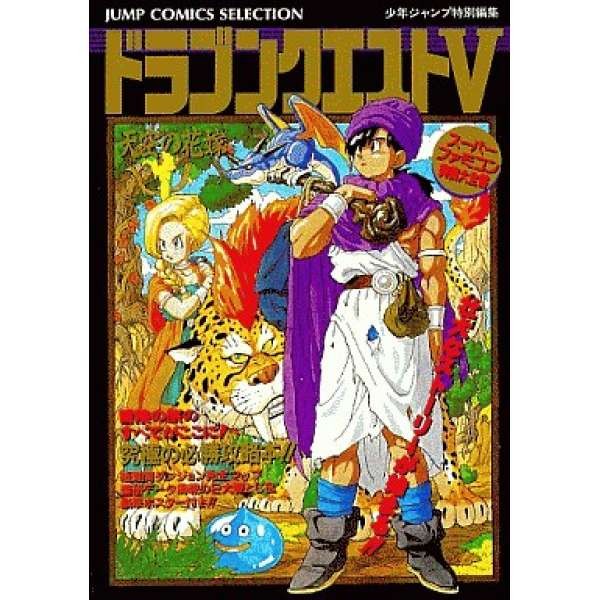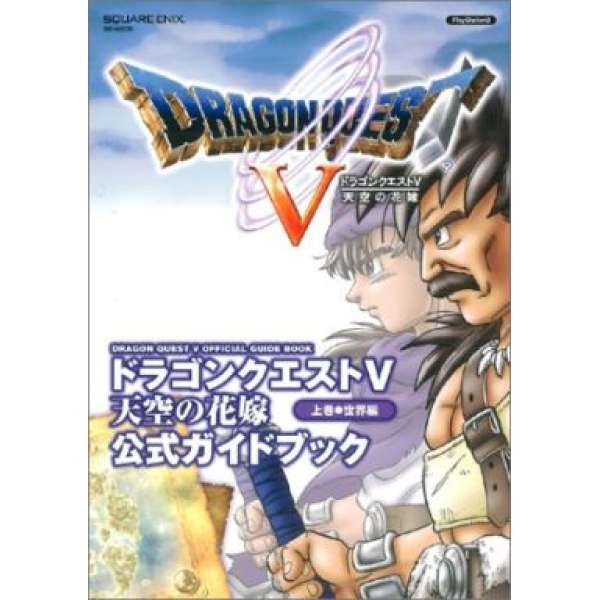勇者鬥惡龍 XI 尋覓逝去的時光
《勇者鬥惡龍 XI 尋覓逝去的時光》(英文:Dragon Quest XI: Echoes of an Elusive Age,日文:ドラゴンクエストXI 過ぎ去りし時を求めて)是由Square Enix於2017年為PlayStation 4推出的正統續作,是經典日式角色扮演遊戲系列《勇者鬥惡龍》的第十一代本傳作品。以其壯闊的劇情架構、細膩的人物描寫與回歸系列根源的設計理念,獲得廣泛好評,被視為對JRPG傳統精神的一次全面致敬與昇華。
在劇本方面,承襲該系列「命運之勇者」的基本傳統架構,但在細節上展現遠比以往更為成熟的敘事深度。故事主軸圍繞一位來自寧靜村莊的年輕人,在成年儀式那天得知自己乃古老傳說中的“勇者”轉世,於是踏上旅程,希望揭開過去的真相。然而,當他向王國報告此事時,卻被視為邪惡存在而遭追殺,從此開始一段逃亡與抗爭交錯的奇幻旅程。隨著劇情發展,逐漸發現這個世界的表象之下潛藏著更多層次的真相,並會經歷一次命運逆轉與時光重構的關鍵轉折,使得整體劇情不再只是單線式的冒險,而是充滿哲理、情感張力與命題思考。
敘事共分為三大章節。第一章是典型的冒險啟程,充滿奇幻場景與角色聚合;第二章則揭露世界背後的黑暗真相,勇者面臨重大失落與抉擇;而第三章則打破時間線的限制,得以穿越回過去改寫命運,讓整個故事從悲劇走向希望與救贖。這種以時光回溯為主軸的敘事手法,在JRPG中極為罕見,亦被許多評論認為是該作最具突破性的劇情設計。
在操作與系統設計上,保留《勇者鬥惡龍》系列傳統的回合制戰鬥機制,但以現代化視覺與設計手感加以呈現。可以選擇自由移動角色以提升臨場感,或回歸傳統的固定站位方式進行戰鬥。戰鬥系統中加入「ゾーン(Zone)」與「れんけい(連攜技)」兩項新要素,前者類似情緒高昂狀態,能暫時提升角色能力,後者則允許多名角色聯手發動強力技能,兼具策略性與演出效果。每個角色擁有獨立的技能盤,能根據喜好調整角色的能力傾向,不論是主攻型、支援型或是魔法型,都能自由培養,構成具個性化的戰鬥隊伍。此外,遊戲世界採半開放設計,場景地圖廣闊豐富,含眾多支線任務與迷你遊戲,鼓勵探索並深入世界觀細節。
美術風格則延續由鳥山明負責的系列設計,角色造型鮮明,配合Unreal Engine 4的渲染技術,使得整個世界呈現出色彩鮮明而富童話感的幻想氛圍。場景細節如草原、城鎮、洞窟與遺跡等處處用心,從光影到動畫效果皆展現出高品質的表現,特別是在PS4主機性能下,遊戲的流暢度與畫面張力達到系列前所未見的高度。配樂部分則由椙山浩一負責,維持古典管弦樂風格,帶有濃厚史詩氣息,雖然部分玩家對使用MIDI版本有些微詞,但整體音樂與場景的搭配依舊營造出強烈情感氛圍。
在市場與評價方面,推出後普遍獲得媒體與玩家的高度評價。多數評論讚賞它成功融合傳統JRPG的精髓與現代遊戲設計的革新,是對系列三十年歷史的總結與突破。Metacritic給予PS4版本的平均分數為86分,並被多家國際遊戲媒體列為當年度最佳角色扮演遊戲之一。尤其是劇本結構與角色塑造獲得特別好評,許多玩家在遊戲後段的情節逆轉與人物命運轉折中獲得強烈的情感共鳴。此外,遊戲約80至100小時的遊玩時間,對於內容深度與娛樂價值也給予肯定。
不過,也有部分玩家指出遊戲前期節奏偏慢,尤其是劇情鋪陳與教學段落過長,對新玩家而言可能稍嫌冗長。而回合制系統雖然經典,但在西方市場中部分年輕玩家會認為缺乏即時感與刺激感。然而這種保留傳統、拒絕妥協的姿態,正是《勇者鬥惡龍》與其他JRPG區隔的關鍵特色。
總結來說,《勇者鬥惡龍 XI 尋覓逝去的時光》是兼具懷舊感與時代感的角色扮演巨作,從故事劇本到戰鬥系統、從畫面表現到音樂配樂皆展現極高水準。對於喜愛故事厚重、角色成長明確、回合制玩法的玩家來說,無疑是當代最值得玩的JRPG之一。既是向過去黃金時代致敬的情書,也是為新世代玩家打開的一扇夢幻之門。
Dragon Quest XI: Echoes of an Elusive Age (Japanese title: ドラゴンクエストXI 過ぎ去りし時を求めて) is a mainline installment in the classic Japanese role-playing game (JRPG) series, Dragon Quest, developed by Square Enix and released for the PlayStation 4 in 2017. As the eleventh entry in the franchise, it was highly praised for its grand narrative, richly developed characters, and a return to the series’ foundational principles. Widely regarded as both a tribute and an evolution of traditional JRPG values, the game has been celebrated for honoring the genre’s roots while elevating its storytelling and gameplay.
The plot follows the franchise’s classic framework of a “Hero of Destiny,” but introduces a level of narrative maturity far beyond its predecessors. The story begins in a peaceful village, where a young man learns during his coming-of-age ceremony that he is the reincarnation of a legendary hero. Setting off on a journey to uncover the truths of his past, he travels to a nearby kingdom to deliver the news—only to be branded a harbinger of darkness and forced into exile. Thus begins a sweeping tale of pursuit, resistance, and revelation, where surface-level events give way to hidden layers of truth. A pivotal mid-game twist involving time travel and a reversal of fate transforms what might seem like a linear adventure into a deeply philosophical and emotionally resonant epic.
The narrative is structured into three main acts. The first act serves as a traditional adventure, bringing together companions and exploring fantastical realms. The second act unveils the darker truths behind the world, plunging the hero into loss and critical decisions. The third act breaks the boundaries of time itself, allowing the player to revisit and rewrite the past, shifting the story’s trajectory from tragedy toward hope and redemption. This use of time manipulation as a central storytelling mechanic is rare in JRPGs and is widely regarded as one of the game’s most innovative features.
In terms of gameplay, Dragon Quest XI retains the classic turn-based battle system that defines the series but presents it with modern visuals and refined controls. Players can choose between dynamic free movement in battle for a more immersive experience or traditional fixed-position encounters. The combat introduces two new features: Zone, a heightened state that temporarily boosts a character’s stats, and Pep Powers, powerful cooperative attacks between multiple characters. Each party member has a unique skill tree, allowing players to customize abilities and roles, whether offense-oriented, support-based, or magic-focused, enabling a tailored combat strategy.
The game world is semi-open, offering large, detailed environments filled with side quests and mini-games that reward exploration and immersion. The visual design continues the iconic Akira Toriyama style, made vibrant and expressive through Unreal Engine 4. From grasslands and castles to dungeons and ruins, every setting is crafted with meticulous attention to detail. The lighting, animation, and environmental effects achieve a level of graphical fidelity previously unseen in the series on PS4. The orchestral-style soundtrack, composed by Koichi Sugiyama, enhances the epic feel, though some players expressed disappointment over the use of MIDI instrumentation in the original release. Nonetheless, the musical themes effectively complement the emotional and atmospheric tone of the game.
Upon release, the game received widespread acclaim from both critics and players. Many praised its successful blend of traditional JRPG elements with modern game design, viewing it as both a culmination and reinvention of over 30 years of franchise history. The PS4 version holds an average score of 86 on Metacritic, and it was named one of the best RPGs of the year by several major gaming publications. The character arcs and narrative twists, especially in the later stages, resonated deeply with players, who found themselves emotionally invested in the fate of the heroes. With a playtime ranging from 80 to 100 hours, the game was also commended for its content richness and entertainment value.
That said, some criticisms were directed at the slow pacing of the early game, particularly during its lengthy exposition and tutorial segments, which some newer players found tedious. Additionally, the turn-based combat system, while iconic, was viewed by some Western players—especially younger audiences—as lacking immediacy or intensity. However, this steadfast commitment to tradition is also what sets Dragon Quest apart from other modern RPGs.
In summary, Dragon Quest XI: Echoes of an Elusive Age is a masterful RPG that balances nostalgia with innovation. From its narrative depth and strategic combat to its vibrant visuals and stirring music, it delivers a high-caliber experience across all fronts. For those who appreciate character-driven stories, meaningful progression, and turn-based gameplay, it stands as one of the finest JRPGs of its generation. It is both a love letter to the golden age of the genre and a magical gateway for a new generation of players.
運費計算方式:
貨款滿1000元運費外加90元
貨款1000以下:買1件運費外加 60元,買2件運費外加 70元,
買3件運費外加 80元 ,買4件運費外加 90元
貨到付款外加30元手續費
外島及大陸地區運費另計
付款方式:
線上刷卡:本站採用Paypal線上刷卡
虛擬帳號匯款:屬於您專屬的虛擬帳戶,方便站長查帳使用,本站強力推薦
實體ATM匯款:請將匯款帳號記錄下來至各大銀行ATM提款機轉帳
超商條碼繳費:請列印本站提供的條碼至四大超商繳費
線上轉帳:透過玉山銀行線上ATM轉帳(此系統只支援IE瀏覽器)
貨到付款:本站採用黑貓宅急便貨到付款
其他注意事項:
如需購買線上點數卡請直接跟站長連絡,本站不提供點數卡的線上付款
-
勇者鬥惡龍 XI 尋覓逝去的時光
- 定 價: 1,296円
- 售 價: 0.00
- 庫存量: 0 套
- 已賣出: 0 套
 人氣指數: 0.4 / 6 顆星
人氣指數: 0.4 / 6 顆星 -
SIMPLE Wii系列 Vol.6 THE 歡樂大決戰
- 定 價:
- 售 價: 0.00
- 庫存量: 0 套
- 已賣出: 0 套
 人氣指數: 0.5 / 6 顆星
人氣指數: 0.5 / 6 顆星

